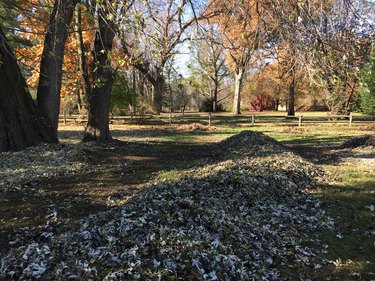No matter what form of gardening you do – big-picture landscaping, sweeping flower beds, lush rows of vegetables – there's some form of compost that can help, and usually several. The question is which type you should use, and why? Mostly, it depends on your goals. Mulches can be used to suppress weeds, limit erosion, conserve moisture or even build up the quality of your soil, depending which you choose to use. Our quick guide runs through 10 of the most popular choices, and how they're best used.
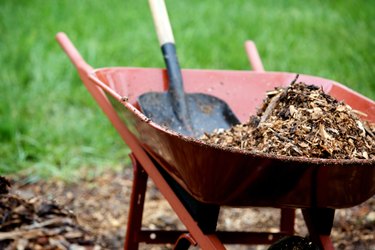
Video of the Day
1. Plastic and Landscape Fabric
Broadly speaking there are two kinds of mulches, organic and inorganic. Organic in this context just means it's "plant stuff" in origin, while inorganic means non-plant origins. Plastic, landscape fabric and other geotextiles are among the inorganic choices, though a few specialty landscaping fabrics are actually plant-based. They're all used for weed suppression, in different ways.
Video of the Day
Black plastic can be used in the vegetable garden, where it covers entire beds to keep weeds down and warm the soil. Plants grow through holes in the surface, and irrigation takes place under the plastic. More commonly, plastic or landscape fabric go underneath decorative mulches in permanent landscaped beds, or around trees and shrubs. Plastic is best around architectural pieces such as planters and fountains; landscape fabric allows water to penetrate and is better around living plants (though it will break down over time, and need to be replaced).
Things you may need:
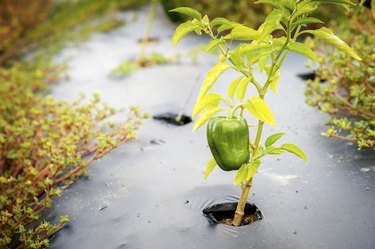
2. Stone, Gravel and Crusher Dust
Another common inorganic mulch is stone, in one form or another. This can be anything from pea gravel to polished river rock to crusher dust. Stone is primarily a decorative mulch, though it certainly can also help reduce erosion and suppress weeds. Typically it's used for walkways and around architectural features like fountains and planters, though an area of well-chosen stone with a nice border around it can become an architectural element in its own right.
Weeds can and will grow up between the stones eventually, so it's usually applied on top of plastic mulch or landscaping fabric: the lower mulch suppresses weeds more effectively, while the stone is more esthetically pleasing. Be careful of using stone around living plants, because it heats up in the sunshine and can fatally "bake" your ornamentals. Some gardeners harness that to their advantage, using stone near heat-loving succulents and tropical plants.
Things you may need:
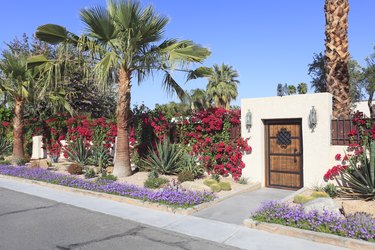
3. Bark Mulch and Wood Chips
Bark mulch and wood chips, like gravel and crushed stone, are often used as a decorative mulch atop a layer of plastic or landscape fabric in purely ornamental settings or as the surface of a walkway. Wood is organic, though, which means it can also be used directly over the soil in ornamental beds. The bark or chips will break down over time, adding organic matter to the soil and eventually enriching it.
This means it needs to be renewed more often than stone, usually once or twice a year (the larger the bark, the slower it breaks down). Cedar, pine and cypress bark are the most common options, though others are available. Wood chips can be either hardwood or softwood, and you can often buy them inexpensively from your local arborists. Be sure you know what kind of wood they're from; black walnut – to pick just one example – contains compounds that inhibit other plants from growing.
Things you may need:
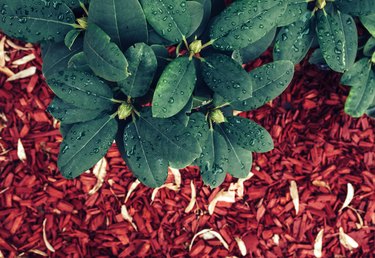
4. Straw Mulch
Unlike bark mulch, straw has just about zero esthetic appeal. It's purely functional: spread over a newly-seeded lawn it will keep the seeds from washing away, and spread over a vegetable garden it suppresses weeds, retains moisture and then enriches the soil as it breaks down. Bales of straw even separate neatly into square "flakes" a few inches thick, easy to distribute around your beds and then loosen with a rake. Just don't let it come right up to the stems of your plants themselves, where its moisture retention can cause rot or mildew (and it also might provide a freeway for pests to stroll on up).
Hay provides similar benefits and contains more nutrients, but you really need to trust your supplier. Hay that's contaminated with pesticide or herbicide residues can damage your garden, and most hay contains weed and grass seeds that can take root in your garden beds. If you have access to hay and want to use it, "solarize" it by moistening it, wrapping or covering it in black plastic, and leaving it in the hot sun for a month. That will sterilize the seeds and speed its decomposition.
Things you may need:
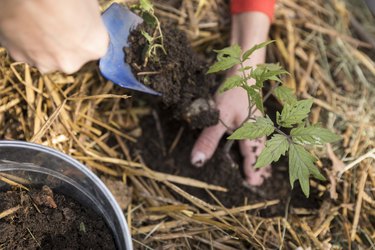
5. Aged Compost
If your goal is for your compost to enrich the soil in your flowerbeds or vegetable garden, aged compost – whether it begins as kitchen scraps or animal manure – is the gold standard. They key here is that it must be thoroughly aged and mature: plant-based compost needs nitrogen to fuel its decomposition process, and will draw it from your soil (temporarily making it poorer, not richer) if decomposition isn't yet complete.
Animal manures are chancy for other reasons. Some are too "hot" and will burn plants if they're applied while fresh, and of course any form of manure can and will contain bacteria that can cause illness if it comes in contact with the part of the plant that you eat. It's not an issue with tomatoes, for example, but very much a potential problem with lettuces or radishes. Your homemade compost is ready when it's brown and crumbly, and smells sweet and earthy, and there are few-to-no visible scraps left in it (you can screen those out). Commercial compost and manure, sold in bags at the garden center, are ready to use right away.
Things you may need:

6. Cocoa Pod Mulch
Chocolate is one of the world's favorite foods, and this means there's a steady supply of waste products from chocolate manufacturing. One of the first is the cocoa pods, the pithy shells that contain the cocoa beans themselves. The dried and chipped pods have become a popular compost option over the past few years, because they're lightweight and smell pleasantly of – spoiler alert! – chocolate. Cocoa pod mulch (you'll also see it spelled "cacao," but they're the same thing) is ideally suited for small ornamental beds, planters and containers, especially around patios and outdoor dining areas where you can enjoy their fragrance.
They do have a few downsides: they're relatively higher in cost than many other mulches; they decompose quickly and will need to be replaced fairly often; and like anything else chocolate-related they can be toxic to pets or wildlife if eaten.
Things you may need:
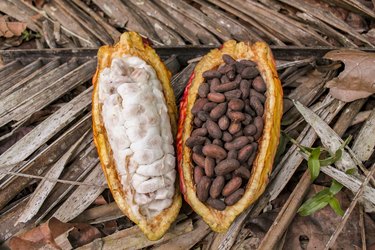
7. Coconut Mulch
Coconut mulch is another byproduct of agricultural production. It's made of shredded coconut husks packed into compressed bales, which must be hydrated with water before it's used (it expands a lot after it's moistened). It's a rusty red-brown in color, like the coconuts it comes from, and it's one of the most durable of organic mulches. Depending on your climate, it can last for two to three years. It's also not toxic to your bets, as cocoa is, though if they nibble it before it's expanded it can still be problematic (it'll expand when it reaches their stomach, with potentially nasty repercussions). Use it on ornamental beds or around perennials, since it doesn't break down quickly enough for vegetable beds.
It's worth pointing out that many areas have their own local form of agricultural waste – cornstalks, cottonseed meal, rice hulls, and so on – which can provide your garden with quality mulch at "shop local" prices. It never hurts to ask around.
Things you may need:
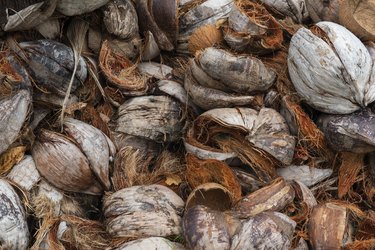
8. Sawdust
Sawdust might reasonably be grouped with bark and wood chips (it's basically just a very fine form of wood chips, after all), but because it breaks down relatively quickly its uses are slightly different. Relatively coarse sawdust can be useful as a surface for walkways, especially in between your beds: it suppresses weeds, it's absorbent, and it improves the footing in an area that's sometimes muddy. Fine sawdust can be used alone or in conjunction with hay or straw as a topping for your beds, where it breaks down relatively quickly and adds organic material to the soil.
One important caution with sawdust (and wood in general): while it's decomposing, it actually draws nitrogen from the soil and makes it (temporarily) less fertile. Smart gardeners can even use that to their advantage. If you have a plot that's been over-fertilized, mulching it with sawdust or fine bark can help tone down the nitrogen levels to something more reasonable.
Things you may need:

9. Cardboard and Newspaper
Some mulches aren't the kind you buy, they're the kind you improvise with what you've got on hand. Cardboard and newspaper fall into that category. You need to be choosy which kinds you use: unprinted newsprint and black-and-white newspapers are fine, and so is corrugated cardboard. Avoid anything with colored inks, like weekly sales flyers or cereal boxes. There are two ways to use paper and cardboard as mulch.
One way is to treat them as a sort of landscape fabric, laying them down in sheets to suppress weeds, and then topping them with another, more attractive mulch. No-till gardeners do this, and just keep adding layers of mulch year after year to build up the soil and keep weeds down.
You can also shred the paper or cardboard into strips, and put down a layer of these strips over your beds. Usually you'll need to add a top layer of straw, bark mulch or something similar to keep the cardboard or paper in place. It's an added layer than costs you little or nothing, and helps stretch your mulch budget.
Things you may need:
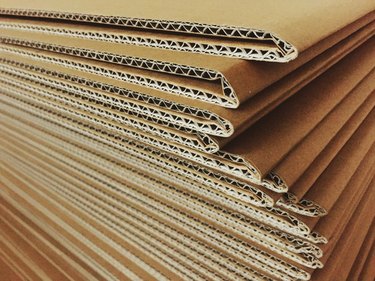
10. Grass Clippings
Another common, inexpensive mulch that's widely used is plain old grass clippings. The simplest way to make use of them is with a mulching lawnmower: the clippings are chopped up so finely they can just stay where they are, decomposing and nourishing your lawn. If you don't like the idea of clippings cluttering up your lawn, though (or coming into the house on your kids' legs and clothing) bagging them up, and using them in the garden, is a pretty good idea. Grass can be used by simply scattering it thinly on top of the beds, leaving a space around the plants (as you would with straw or hay).
There are a couple of caveats: don't mound the grass in thick layers, because it tends to mat into clumps that take a long time to break down; and don't use your clippings if you spray your lawn with herbicides. The herbicides are just as toxic to your garden plants as they are to weeds.
Things you may need:
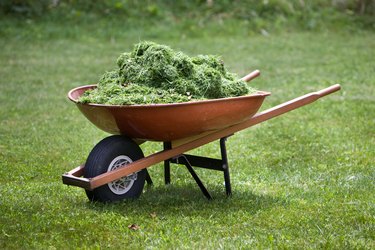
11. Leaves or Pine Straw
Another potentially valuable mulch that many homeowners already have on their property is leaves. If anything you may have way more than you'd ideally like, so putting them to use in the garden is an especially good idea. If the leaves are left whole they'll tend to form a matted layer that's slow to break down. You can harness that to your advantage if your primary goal is to suppress weeds, but ordinarily you're better off to chop or shred the leaves.
You can invest in a standalone shredder if you have lots of leaves, or for smaller quantities you can simply run them over with your lawnmower. Shredded leaves do tend to blow around, so it's best to top them with a layer of something else such as straw. If you have pine trees, the dried layer of accumulated needles they scatter – aka "pine straw" – is also an excellent mulch.
Things you may need:
